Key takeaways:
- Drone mapping in Zanzibar reveals intricate ecosystems and supports conservation efforts through detailed aerial imagery.
- Using drones enhances environmental monitoring, speeds up data collection, and fosters collaboration among stakeholders for sustainable practices.
- Meticulous planning, high-resolution cameras, and effective post-processing are essential techniques for successful mapping projects.
- Key findings from mapping include the importance of seagrass beds for marine life and the impact of human activity on coral health, emphasizing the need for responsible tourism.
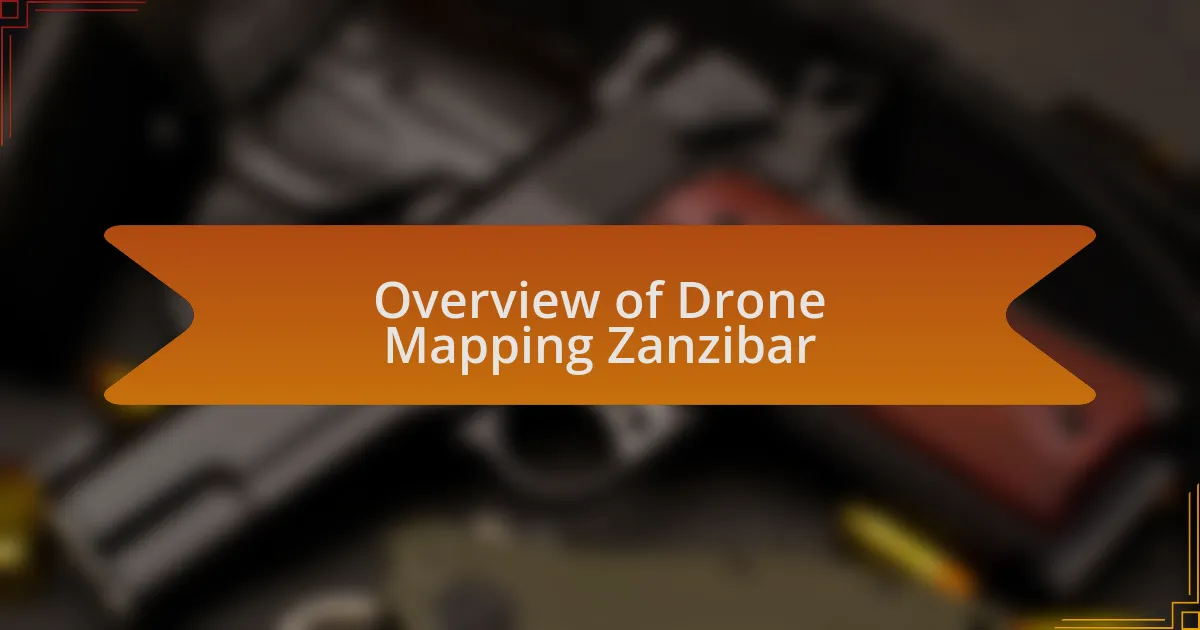
Overview of Drone Mapping Zanzibar
Drone mapping in Zanzibar offers an innovative lens through which the stunning beauty of Mnemba Atoll can be captured and understood. I vividly recall the first time I watched a drone hover silently above the turquoise waters, its camera revealing hidden depths and vibrancy that the naked eye couldn’t discern. Isn’t it fascinating how technology can unravel the secrets of our natural world?
As I explored the coast, I couldn’t help but feel a sense of awe seeing the intricate details of the coral reefs laid bare from above. The sharp contrast between the vibrant marine life and the dynamic coastline sparked a thought: how many precious ecosystems could benefit from this kind of mapping? It’s a powerful tool not just for researchers but also for conservationists who need to protect these fragile environments.
Using drones for mapping in Zanzibar is increasingly transforming the way we approach environmental monitoring and land management. The data collected can guide sustainable tourism and fishing practices. Reflecting on my experiences, I find it encouraging to think about how these advancements can drive positive changes for both the communities and the delicate ecosystems that make up this paradise.
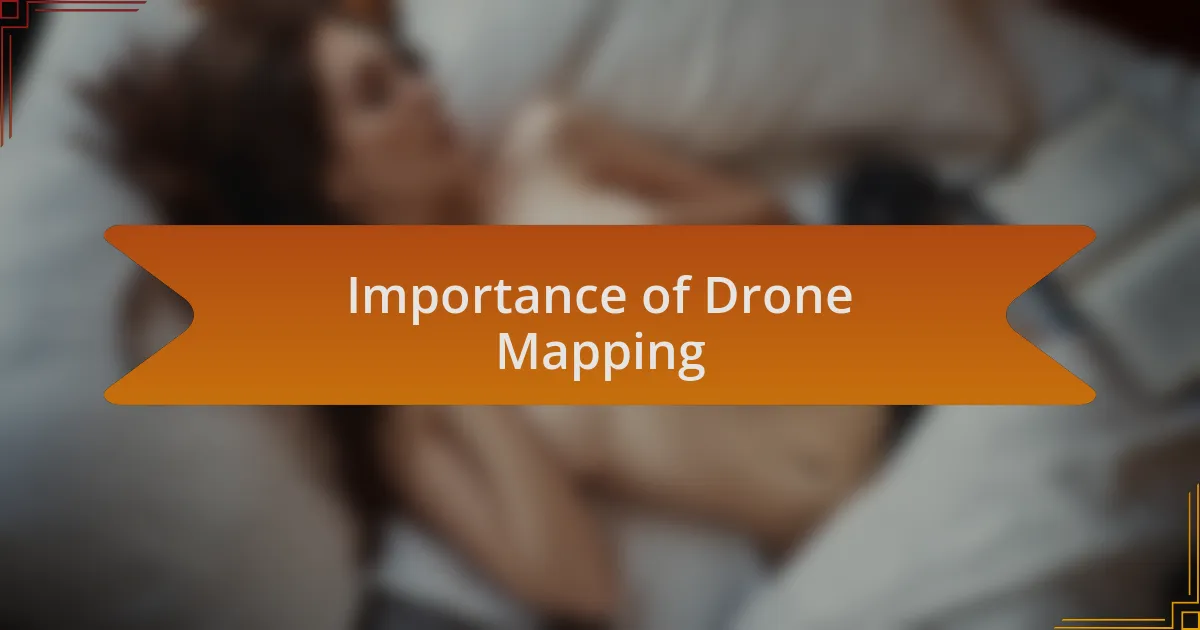
Importance of Drone Mapping
The role of drone mapping in understanding our environment cannot be overstated. I remember the rush I felt when I first witnessed a mapping session unfold over Mnemba Atoll. The precision and clarity of the aerial images were striking, revealing patterns in vegetation and water flow that had previously gone unnoticed. How could something so simple as a flying camera offer such profound insights?
Drones empower us to cover vast areas in a fraction of the time it would take using traditional methods. During one outing, I was amazed at how quickly we gathered comprehensive data on coastal erosion, allowing us to identify regions at risk. It made me realize that with drone mapping, not only do we gain speed, but we also enhance our ability to respond to environmental challenges. Isn’t technology remarkable in its capacity to blend efficiency with conservation?
Moreover, the real-time data collected through drone imagery fosters collaboration among stakeholders. While participating in a community session, I was struck by how local fishermen and environmentalists used mapping data to discuss sustainable fishing practices. This collective dialogue underscored the importance of shared knowledge. It makes me wonder—could this be the key to harmonious coexistence with our environment in Zanzibar?

Best Drones for Mapping
When it comes to choosing the best drones for mapping, I’ve found that certain models stand out due to their reliability and features. The DJI Phantom 4 RTK, for instance, offers centimeter-level accuracy, making it ideal for tasks requiring precision. I recall a mapping project where its real-time kinematic (RTK) positioning helped us create detailed topographical maps that were invaluable for coastal zone management.
In my experience, the senseFly eBee X is another remarkable contender. Lightweight and easy to transport, I’ve taken it on various field trips, where its long flight time allowed us to cover expansive areas without interruption. It’s equipped with multiple camera options, so we could select the best type for our specific objectives – whether we needed high-resolution images for land-use studies or thermal data for vegetation monitoring.
Sometimes, I ponder how the newer enterprise-grade drones, like the senseFly eBee X, are revolutionizing the mapping landscape. Each time I fly one, I can feel the excitement of possibilities it brings to planning and environmental research. Are we on the brink of an era where drone mapping effectively reshapes our understanding of ecology?
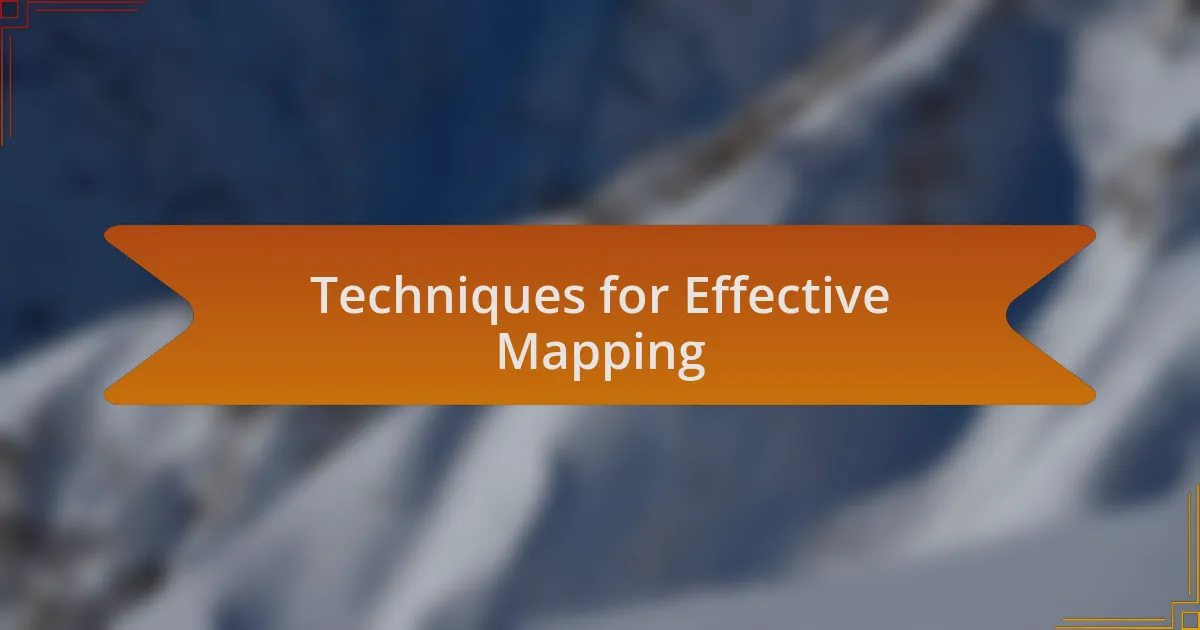
Techniques for Effective Mapping
To achieve effective mapping, I’ve found that planning the flight path meticulously is crucial. Before starting, I always review the area’s features and create a grid pattern that ensures complete coverage. On one occasion, this meticulous planning allowed me to capture stunning details of shoreline erosion that would have been missed with a more haphazard approach.
Using high-resolution cameras can truly elevate the quality of the data collected. I remember a project where switching to a 20-megapixel camera transformed our results, unveiling subtle variations in habitat types. Such enhancements not only enrich our datasets but also provide deeper insights that can drive more informed conservation efforts. Have you ever considered how much additional information might be discovered simply by upgrading your camera?
Post-processing is another key technique that I swear by. The magic often happens after the flight, where I use software to stitch images together into comprehensive maps. I can still recall the sense of achievement as the final product revealed hidden patterns and landscapes. It’s like piecing together a puzzle where each segment of data contributes to a larger understanding of our environment.
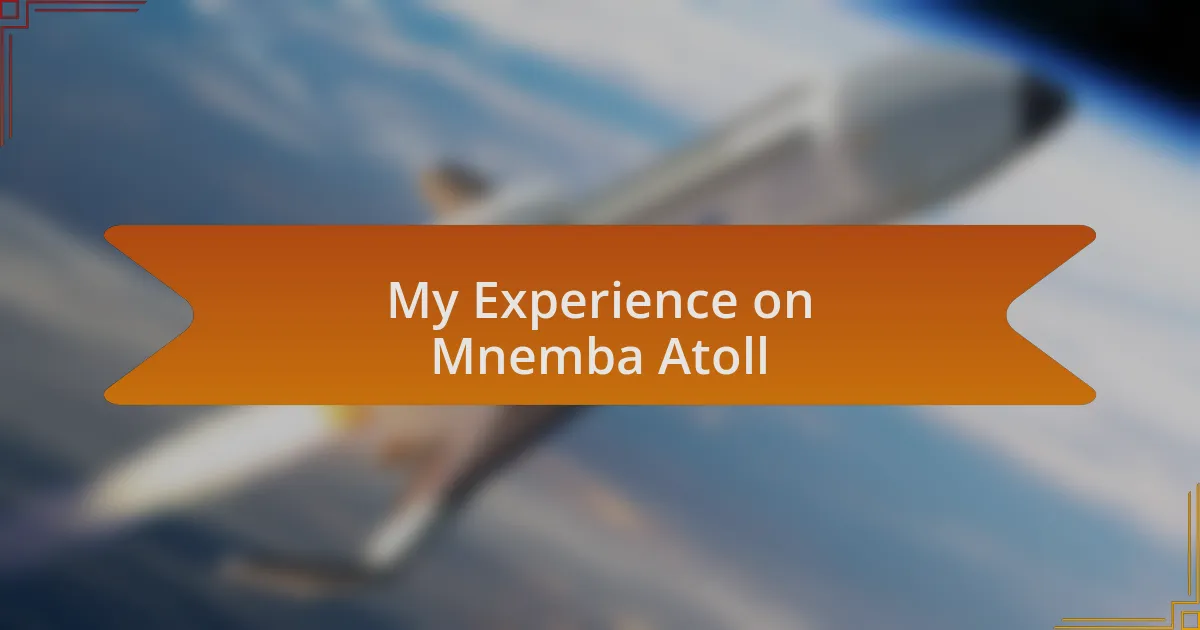
My Experience on Mnemba Atoll
My adventure on Mnemba Atoll was nothing short of mesmerizing. As I glided above the vibrant coral reefs, I felt a profound connection with nature. The crystal-clear waters showcased a breathtaking array of marine life—I remember spotting a cluster of clownfish dancing among the anemones, and I couldn’t help but smile, realizing how fortunate I was to witness such beauty.
During my mapping sessions, I was struck by the contrast between the lush greenery of the island and the deep blue of the surrounding ocean. Each flight revealed unexpected treasures, like hidden sandbanks and fragile ecosystems that I hadn’t anticipated. Have you ever experienced that rush of discovery when everything clicks together in your mind, and you see a complex ecosystem for what it truly is?
What truly resonated with me was the awareness of my role in preserving this paradise. Each high-resolution image I captured served not just as data but as a reminder of my responsibility toward conservation. It’s empowering to know that my work contributes to a broader narrative of sustainability—doesn’t it feel amazing to realize that even small efforts can have a significant impact on protecting such pristine environments?
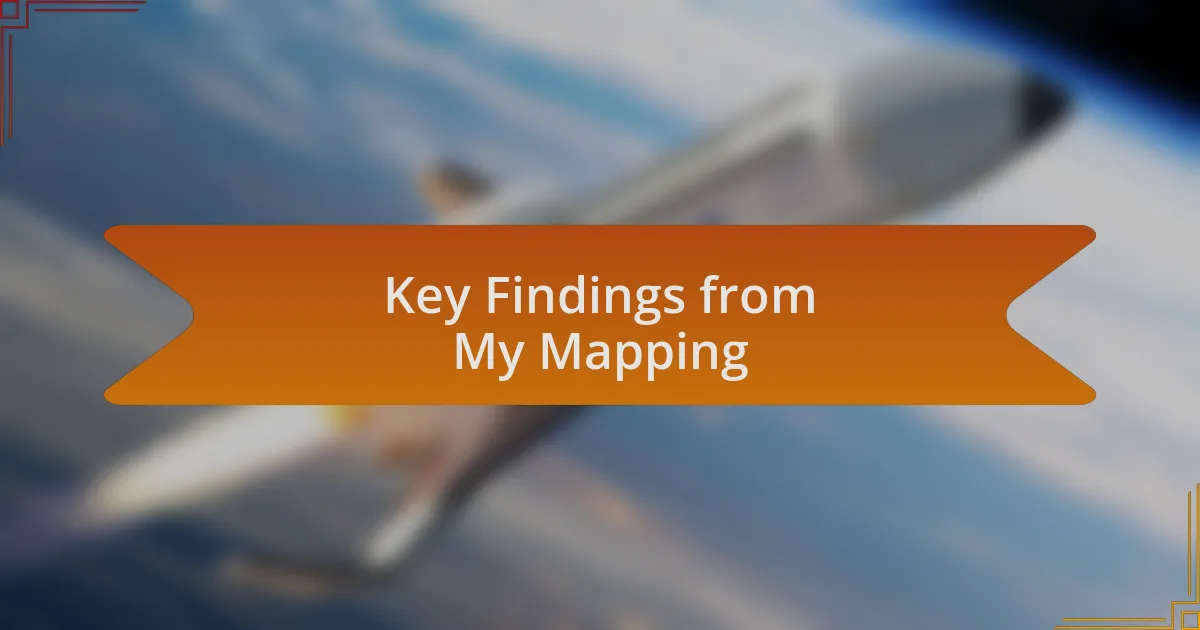
Key Findings from My Mapping
As I sifted through the data collected from my aerial mapping, I was fascinated to discover the diversity of marine habitats. Certain areas teemed with life, while others showed signs of distress, hinting at the delicate balance that sustains these ecosystems. Have you ever looked at a map and felt the urge to dive into every corner, uncovering stories hidden beneath the surface?
One of my significant findings was the extent of the seagrass beds around Mnemba Atoll. These underwater meadows are vital not just for marine species but also for carbon sequestration. It’s awe-inspiring to think that these seemingly simple plants play such a crucial role in combatting climate change; isn’t it incredible how nature finds ways to aid in our fight for a healthier planet?
I also noted intriguing patterns in how human activity interacts with the local environment. There were areas where boat traffic was clearly influencing coral health, even seen from the sky. This observation struck me hard—what can we do to change our habits for the better? I felt an urgency to advocate for initiatives that promote responsible tourism, with the hope that my mapping could guide efforts in that direction.